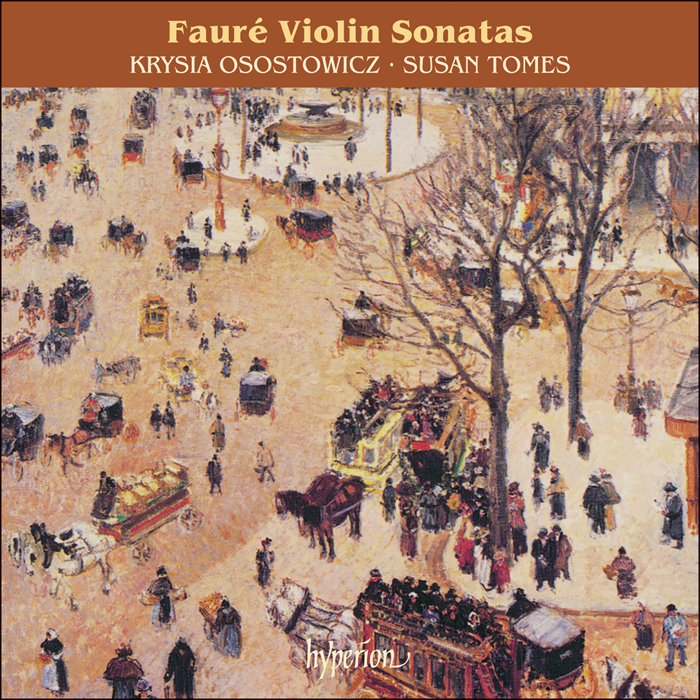Fauré: Violin Sonatas
Krysia Osostowicz (violin), Susan Tomes (piano)
CDA66277
Few composers have lived through such far-reaching changes in musical climate as Fauré. When he composed his first works, in the 1860s, French musical life was dominated by Gounod and Mendelssohn, and the grandiose operas of Spontini and Meyerbeer. Chopin, Liszt and Wagner were still considered daringly modern in most circles. By the time of his death in 1924, Debussy had been dead for six years, Berg had completed Wozzeck, and Schoenberg had formulated his twelve-tone system. Yet, although a considerable gulf does exist between Fauré’s early works and his music of the 1920s, he remained largely impervious to outside influences after he had evolved a distinctive personal style. His development from the First Violin Sonata and First Piano Quartet, both dating from the mid-1870s, to the chamber music and songs of his last ten years, was gradual and self-consistent. His harmonic language, based on a highly original fusion of tonality and the ancient church modes, grew more subtle and ambivalent. His textures became at once more lucid and more dense contrapuntally, his rhythms and melodies more flexible, and his forms both freer and more economical. But at no point in Fauré’s career was there any fundamental change in compositional technique. Despite its more complex harmonic language and its more elusive emotional character, the Second Violin Sonata, completed in 1917, is self-evidently the work of the same composer as the First Sonata written more than four decades previously.

